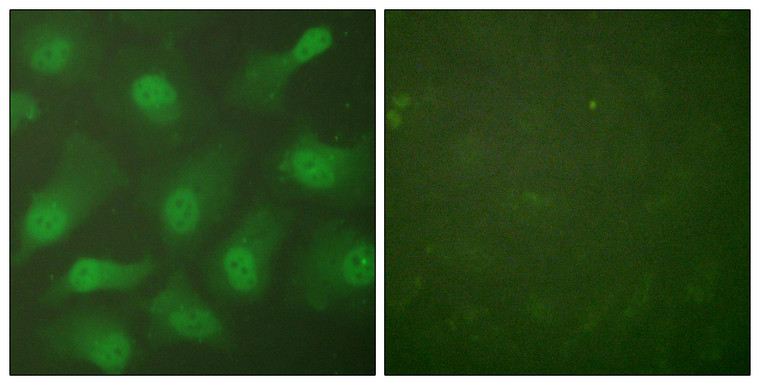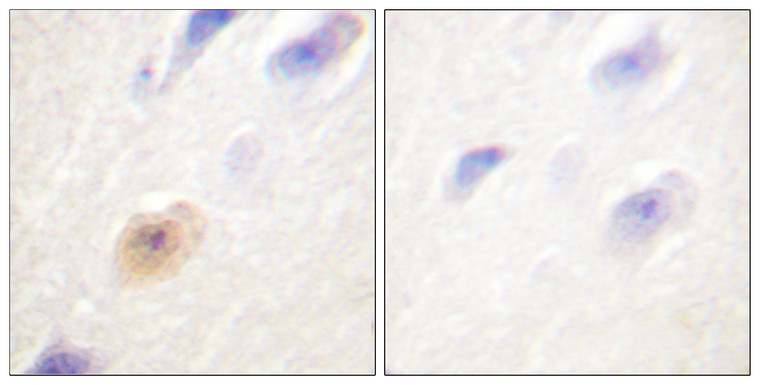| Host: |
Rabbit |
| Applications: |
WB/IHC/IP/IF/ELISA |
| Reactivity: |
Human/Rat/Mouse |
| Note: |
STRICTLY FOR FURTHER SCIENTIFIC RESEARCH USE ONLY (RUO). MUST NOT TO BE USED IN DIAGNOSTIC OR THERAPEUTIC APPLICATIONS. |
| Short Description: |
Rabbit polyclonal antibody anti-Exportin-2 (1-50 aa) is suitable for use in Western Blot, Immunohistochemistry, Immunoprecipitation, Immunofluorescence and ELISA research applications. |
| Clonality: |
Polyclonal |
| Conjugation: |
Unconjugated |
| Isotype: |
IgG |
| Formulation: |
Liquid in PBS containing 50% Glycerol, 0.5% BSA and 0.02% Sodium Azide. |
| Purification: |
The antibody was affinity-purified from rabbit antiserum by affinity-chromatography using epitope-specific immunogen. |
| Concentration: |
1 mg/mL |
| Dilution Range: |
WB 1:500-1:2000IHC 1:100-1:300IP 2-5 ug mg/lysateIF 1:200-1:1000ELISA 1:40000 |
| Storage Instruction: |
Store at-20°C for up to 1 year from the date of receipt, and avoid repeat freeze-thaw cycles. |
| Gene Symbol: |
CSE1L |
| Gene ID: |
1434 |
| Uniprot ID: |
XPO2_HUMAN |
| Immunogen Region: |
1-50 aa |
| Specificity: |
CAS Polyclonal Antibody detects endogenous levels of CAS protein. |
| Immunogen: |
The antiserum was produced against synthesized peptide derived from the human CSE1L at the amino acid range 1-50 |
| Function | Export receptor for importin-alpha. Mediates importin-alpha re-export from the nucleus to the cytoplasm after import substrates (cargos) have been released into the nucleoplasm. In the nucleus binds cooperatively to importin-alpha and to the GTPase Ran in its active GTP-bound form. Docking of this trimeric complex to the nuclear pore complex (NPC) is mediated through binding to nucleoporins. Upon transit of a nuclear export complex into the cytoplasm, disassembling of the complex and hydrolysis of Ran-GTP to Ran-GDP (induced by RANBP1 and RANGAP1, respectively) cause release of the importin-alpha from the export receptor. CSE1L/XPO2 then return to the nuclear compartment and mediate another round of transport. The directionality of nuclear export is thought to be conferred by an asymmetric distribution of the GTP- and GDP-bound forms of Ran between the cytoplasm and nucleus. |
| Protein Name | Exportin-2Exp2Cellular Apoptosis Susceptibility ProteinChromosome Segregation 1-Like ProteinImportin-Alpha Re-Exporter |
| Cellular Localisation | CytoplasmNucleusShuttles Between The Nucleus And The Cytoplasm |
| Alternative Antibody Names | Anti-Exportin-2 antibodyAnti-Exp2 antibodyAnti-Cellular Apoptosis Susceptibility Protein antibodyAnti-Chromosome Segregation 1-Like Protein antibodyAnti-Importin-Alpha Re-Exporter antibodyAnti-CSE1L antibodyAnti-CAS antibodyAnti-XPO2 antibody |
Information sourced from Uniprot.org
12 months for antibodies. 6 months for ELISA Kits. Please see website T&Cs for further guidance










